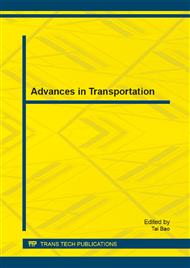[1]
J. Schmidt, K.D. Moergenthaler, K. -P. Brehler and J. Arndt. High-strength graphites for carbon piston applications[J]. Carbon, Volume 36, Issues 7-8, 1998, Pages 1079-1084.
DOI: 10.1016/s0008-6223(98)00081-5
Google Scholar
[2]
F.S. Silva. Fatigue on engine pistons—A compendium of case studies[J]. Engineering Failure Analysis, Volume 13, Issue 3, April 2006, Pages 480-492.
DOI: 10.1016/j.engfailanal.2004.12.023
Google Scholar
[3]
Peter Kemnitz, Olaf Maier, Ralph Klein. Monotherm,a New Forged Steel Piston Design for Highly Loaded Diesel Engines, SAE Paper 2000-01-0924.
DOI: 10.4271/2000-01-0924
Google Scholar
[4]
Manuel Valdés, Jesús Casanova and Antonio Rovira, et. Design of Carbon Pistons Using Transient Heat Transfer and Stress Analyses, SAE Paper 2001-01-3217.
DOI: 10.4271/2001-01-3217
Google Scholar
[5]
Michael Winship, William J. Morgan. Piston Design for the Nineties, SAE Paper 930273.
Google Scholar
[6]
Sebastian Thalmair, Jan Thiele and Andreas Fischersworring-Bunk, et. Cylinder Heads for High Power Gasoline Engines Thermomechanical Fatigue Life Prediction, SAE Paper 2006-01-0541.
DOI: 10.4271/2006-01-0541
Google Scholar
[7]
Robert Minichmayr, Martin Riedler, Gerhard Winter, et. Thermo mechanical fatigue life assessment of aluminium components using the damage rate model of Sehitoglu[J]. International Journal of Fatigue, Volume 30, Issue 2, February 2008, Pages 298-304.
DOI: 10.1016/j.ijfatigue.2007.01.054
Google Scholar
[8]
J.J. Thomas, L. Verger, A. Bignonnet, et. Thermomecanical Design in the Automotive Industry, SAE Paper 2002-01-0659.
DOI: 10.4271/2002-01-0659
Google Scholar
[9]
C.D. Rakopoulos, D.C. Rakopoulos, G.C. Mavropoulos, et. Experimental and theoretical study of the short term response temperature transients in the cylinder walls of a diesel engine at various operating conditions[J]. Applied Thermal Engineering, Volume 24, Issues 5-6, April 2004, Pages 679-702.
DOI: 10.1016/j.applthermaleng.2003.11.002
Google Scholar
[10]
H.A. Richard, M. Sander, M. Fulland, et. Development of fatigue crack growth in real structures[J]. Engineering Fracture Mechanics, Volume 75, Issues 3-4, February-March 2008, Pages 331-340.
DOI: 10.1016/j.engfracmech.2007.01.017
Google Scholar
[11]
M. Haiba, D.C. Barton, P.C. Brooks, et. Review of life assessment techniques applied to dynamically loaded automotive components[J]. Computers & Structures, Volume 80, Issues 5-6, March 2002, Pages 481-494.
DOI: 10.1016/s0045-7949(02)00022-6
Google Scholar
[12]
Abolhassan Khosrovaneh, Ravi Pattu and William Schnaidt. Discussion of Fatigue Analysis Techniques in Automotive Applications, SAE Paper 2004-01-0626.
DOI: 10.4271/2004-01-0626
Google Scholar
[13]
Luc Rémy, Adil Alam, Nader Haddar, et. Growth of small cracks and prediction of lifetime in high-temperature alloys[J]. Materials Science and Engineering: A, Volumes 468-470, 15 November 2007, Pages 40-50.
DOI: 10.1016/j.msea.2006.08.133
Google Scholar
[14]
M.L. Pang S.P. Smith,R. Herman, et. Fatigue Life Assessment on an Automotive Engine Exhaust Valve, SAE Paper 2006-01-0977.
DOI: 10.4271/2006-01-0977
Google Scholar


